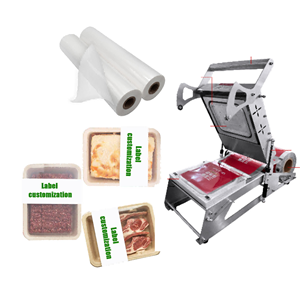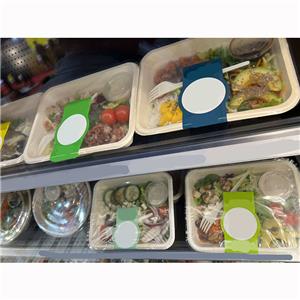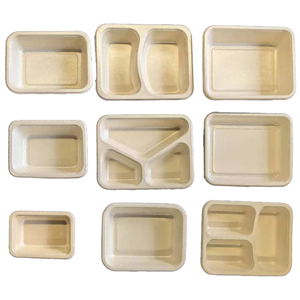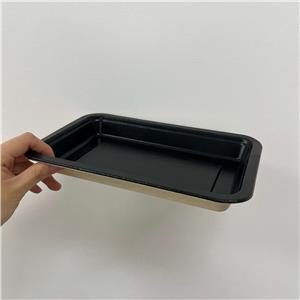meat packages
Packaging for fresh food needs to balance multiple requirements, including preservation, damage prevention, hygiene, and environmental protection. Below are the common types of packaging used for fresh food and their characteristics:
1. Plastic Wrap
Features: Transparent and flexible, it tightly wraps food to prevent moisture loss and external contamination.
Applications: Vegetables, fruits, meat, fish, etc.
Drawbacks: Traditional plastic wrap is often made of non-eco-friendly materials.
2. Modified Atmosphere Packaging (MAP)
Features: Extends the shelf life of food by adjusting the gas composition inside the packaging (e.g., increasing nitrogen or carbon dioxide).
Applications: Meat, seafood, ready-to-eat salads, pre-cut vegetables, etc.
Advantages: Significantly extends shelf life while maintaining color and texture.
3. Vacuum Packaging
Features: Seals food after removing air, preventing oxidation and bacterial growth.
Applications: Meat, seafood, cooked food, etc.
Advantages: Extends freshness and facilitates storage and transportation.
4. Foam Tray + Plastic Wrap
Features: Foam trays provide support, while plastic wrap covers the surface to prevent damage and contamination.
Applications: Meat, fish, poultry, etc.
Drawbacks: Foam materials are difficult to degrade and are not environmentally friendly.
5. Pulp Molded Tray
Features: Made from renewable pulp, eco-friendly and biodegradable, can be designed in various shapes.
Applications: Eggs, fruits, vegetables, meat, etc.
Advantages: Eco-friendly, breathable, and suitable for fresh food.
6. Biodegradable Plastic Bag
Features: Made from biodegradable materials (e.g., PLA, PBAT), reducing environmental pollution.
Applications: Vegetables, fruits, bulk food, etc.
Advantages: Environmentally friendly and compliant with plastic ban policies.
7. Mesh Bag
Features: Breathable, lightweight, and suitable for bulk fresh food.
Applications: Onions, potatoes, citrus fruits, etc.
Advantages: Low cost and easy to carry.
8. Reusable Containers
Features: Durable, airtight, and reusable.
Applications: Premium fresh food, pre-made salads, ready-to-eat meals, etc.
Advantages: Eco-friendly and suitable for branded packaging.
9. Ice Pack + Insulated Box
Features: Used for cold chain transportation to maintain low temperatures.
Applications: Frozen meat, seafood, ice cream, etc.
Advantages: Effectively prevents food spoilage.
10. Smart Packaging
Features: Equipped with sensors or labels to monitor temperature, humidity, or freshness in real time.
Applications: Premium fresh food, cold chain transportation.
Advantages: Enhances food safety and builds consumer trust.
11. Eco-Friendly Packaging
Features: Uses biodegradable or recyclable materials, such as bagasse, bamboo fiber, or cornstarch.
Applications: Various fresh food products.
Advantages: Reduces environmental pollution and aligns with sustainable development trends.
12. Multilayer Composite Film Packaging
Features: Combines multiple layers of materials to provide excellent barrier properties and preservation performance.
Applications: High-value fresh food, such as salmon, steak, etc.
Advantages: Extends shelf life and maintains food quality.
Summary
The choice of packaging for fresh food should be optimized based on the food's characteristics, transportation conditions, and environmental requirements. With increasing environmental awareness, biodegradable materials and smart packaging are becoming industry trends. Businesses should select packaging solutions that not only preserve freshness but also minimize environmental impact.




